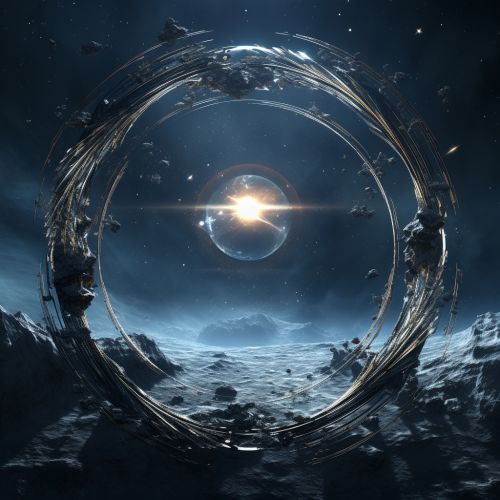The Dynamics of Planetary Rings and Moons
Introduction
Planetary rings and moons are fascinating celestial bodies that have been the subject of scientific study for centuries. These structures, found in our own solar system and beyond, are complex and dynamic, constantly changing and evolving due to a variety of factors. This article will delve into the intricate dynamics of planetary rings and moons, exploring their formation, structure, and the physical processes that shape them.


Formation of Planetary Rings and Moons
Planetary rings and moons are thought to form through a process known as accretion, where dust and gas in a planet's orbit gradually come together to form larger bodies. This process is influenced by a variety of factors, including the gravitational pull of the planet, the density and composition of the dust and gas, and the presence of other celestial bodies.
Moons can also form through a process known as capture, where a planet's gravitational pull attracts a passing asteroid or comet, causing it to become trapped in the planet's orbit. This process is thought to be responsible for the formation of many of the moons in our solar system, including Phobos and Deimos, the moons of Mars.
Structure of Planetary Rings
Planetary rings are composed of countless small particles, ranging in size from tiny dust grains to large boulders. These particles are made up of a variety of materials, including ice, rock, and metal, and are often coated in a thin layer of regolith.
The structure of a planetary ring is determined by a variety of factors, including the ring's distance from the planet, the mass and composition of the ring particles, and the gravitational influence of nearby moons. These factors can result in a wide variety of ring structures, from thin, narrow rings to wide, diffuse rings.
Dynamics of Planetary Rings
The dynamics of planetary rings are governed by a variety of physical processes, including gravitational interactions, resonances, and collisions between ring particles. These processes can result in a variety of phenomena, including the formation of gaps and arcs in the rings, the creation of shepherd moons, and the scattering of ring particles into space.
Gravitational interactions between the ring particles and the planet can cause the particles to spread out, creating a diffuse ring. Conversely, gravitational interactions with nearby moons can confine the ring particles, creating narrow rings or gaps in the ring.
Resonances, where the orbital period of a ring particle matches the orbital period of a nearby moon, can also shape the structure of the rings. These resonances can cause the ring particles to clump together, creating dense arcs or gaps in the ring.
Collisions between ring particles can also play a role in shaping the rings. These collisions can cause the particles to break apart, creating a cloud of dust and debris that can spread out to form a diffuse ring.
Structure and Dynamics of Moons
Moons, like planetary rings, are shaped by a variety of physical processes. These include gravitational interactions with the planet and other moons, tidal forces, and impacts with asteroids and comets.
The structure of a moon is determined by its composition and the physical processes that have shaped it. For example, moons composed primarily of ice, like Saturn's moon Enceladus, can have a smooth, icy surface, while moons composed primarily of rock, like Jupiter's moon Io, can have a rough, rocky surface.
The dynamics of moons are also influenced by a variety of factors. For example, the gravitational pull of the planet can cause the moon to become tidally locked, with one side of the moon always facing the planet. Tidal forces can also cause the moon to heat up, resulting in volcanic activity or the formation of geysers.
Impacts with asteroids and comets can also shape the surface of the moon, creating craters and basins. Over time, these impacts can cause the moon to break apart, creating a ring of debris around the planet.
Conclusion
The dynamics of planetary rings and moons are complex and fascinating, shaped by a variety of physical processes and interactions. Through the study of these celestial bodies, scientists can gain valuable insights into the formation and evolution of our solar system and other planetary systems.
